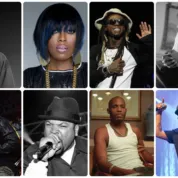
A Shift in Hip Hop: What Is Mumble Rap?
Mumble rap emerged as a distinctive force in the music world in the early 2010s, marking a significant shift in the hip-hop genre. This style is characterized primarily by its emphasis on melody and rhythm rather than the articulate lyricism that traditional rap is known for. In mumble rap, the clarity of the lyrics often takes a backseat to the overall sound and atmospheric vibe of the music, creating tracks that are catchy and resonate with a broad audience. This approach has not only diversified the soundscape of hip-hop but has also sparked debates about the evolving nature of the genre. Mumble rap’s unique blend of indistinct vocals and compelling beats has carved out a niche that appeals especially to the younger, digital-native generation, reshaping how music is consumed and appreciated in the streaming age.
Characteristics of Mumble Rap
At its core, mumble rap is defined by a few key characteristics: a slurred, often barely intelligible vocal delivery coupled with heavy use of autotune, simple and catchy hooks, and a focus on overall vibe rather than detailed storytelling. This style is frequently underlined by repetitive ad-libs and a strong rhythmic base, which creates a catchy, atmospheric sound that resonates particularly well with younger audiences.
When Did Mumble Rap Start?
Mumble rap's emergence can be traced back to the early 2010s. It developed as artists began to experiment with new sounds within the hip-hop genre, moving away from conventional structures and toward a more free-form and expressive approach. This period saw the rise of artists who would prefer to let their emotions and the feel of the music guide their words, rather than adhere to the traditional expectations of lyrical precision.
Why Has Mumble Rap Become Popular?
The popularity of mumble rap can be attributed to several factors. First, its catchy and repetitive nature makes it easy to listen to and remember, catering to the digital era's preference for quick, consumable media. Additionally, the rise of streaming platforms and social media has facilitated the spread of mumble rap, as these platforms are perfectly suited to the quick, vibe-driven snippets of sound that mumble rap excels in. The genre's accessibility has allowed it to quickly ascend the charts and dominate playlists.
Is Mumble Rap Misunderstood?
Despite its popularity, mumble rap has been a point of contention within the music community. Critics argue that its reliance on melody and vibe over clear lyrical content dilutes the poetic essence of hip-hop. However, proponents of mumble rap argue that it represents an evolution of the genre, introducing a new form of expression that values mood and emotion as much as it does lyrical complexity. This ongoing debate highlights the diverse and ever-changing nature of hip-hop as an art form.
Mumble rap represents a significant shift in the landscape of hip-hop, challenging traditional norms and setting new trends. While it may not align with everyone's definition of what rap should be, it undeniably has made a mark on the genre and continues to influence the direction of modern music. Its blend of simplicity, melody, and rhythm offers a fresh perspective on what hip-hop can be, pointing to a broader and more inclusive future for the genre.
Who Started Mumble Rap?
Origins and Early Innovators
Mumble rap, a style characterized by its slurred, indistinct vocal delivery and melodic emphasis, first began shaping the modern hip-hop landscape in the early 2010s. Though it's challenging to credit a single artist with the genre's creation, several key figures stand out for their early contributions. Among them, Future, Chief Keef, and Young Thug are frequently noted for their pioneering work in this field. These artists embraced and popularized a vocal style that leaned heavily on autotune, melding rap with melodic hooks in a way that was both innovative and controversial.
The Rise of Mumble Rap
As the 2010s progressed, mumble rap gained traction, evolving through the contributions of various artists who each brought their unique flavors to the genre. This period saw a blend of influences that pushed mumble rap from underground circles to mainstream success. Artists like Gucci Mane and Migos furthered the style by emphasizing catchy, repetitive hooks and a focus on rhythm and vibe over clear lyrical content. This shift reflected a broader trend in hip-hop towards more fluid, expressive forms of musical storytelling, where the mood set by the music became as important as the words themselves.
Current State and Influence
Today, mumble rap continues to be a significant force in the music industry, influencing a wide array of artists across different genres. The style has proven its staying power and continues to evolve, with new artists entering the scene and pushing the boundaries of what mumble rap can be. This ongoing evolution speaks to the genre's capacity for reinvention and its enduring appeal among listeners who value its unique blend of melody and rhythm.
Mumble rap's history is a testament to hip-hop's dynamic nature—an ever-changing landscape where new sounds and styles emerge and redefine what the genre can be. From its early days in the 2010s to its current form, mumble rap has sparked both controversy and admiration, challenging traditional norms and expanding the possibilities of hip-hop music. As it continues to evolve, mumble rap not only reflects the tastes of a new generation but also influences the future direction of global music trends.
Mumble Rap Examples
"Panda" by Desiigner and "Magnolia" by Playboi Carti serve as quintessential examples of mumble rap, each highlighting key aspects of the genre. Desiigner’s "Panda," released in 2015, catapulted to success with its infectious beat and indistinct vocal style that typifies mumble rap. The song’s lyrics, often hard to decipher, exemplify how mumble rap prioritizes vibe and rhythm over clear lyrical delivery. Its heavy use of auto-tune and repetitive hooks make it a staple in the mumble rap discussion.
Playboi Carti’s "Magnolia" takes a slightly different approach compared to "Panda". Released in 2017, "Magnolia" created a vibe for its catchy ad-libs and Carti’s distinct, laid-back vocal delivery that blends seamlessly with the track’s dynamic production. This song highlights the genre’s emphasis on atmosphere and mood, rather than straightforward storytelling or complex lyricism.
Both tracks have influenced numerous artists who either embrace or deviate from this style. While artists like Lil Uzi Vert and Lil Yachty follow in similar footsteps with their use of vocal effects and focus on melodic elements, others like J. Cole and Kendrick Lamar often contrast sharply with more articulate and lyrically dense rap styles. This diversity within hip-hop shows the expansive reach and influence of mumble rap as both a continuation and a departure from traditional rap forms.
Top 10 Best Mumble Rappers
The world of mumble rap isn't just about the sound; it's also about the persona and the spectacle. These artists have not only defined the contours of a subgenre but have also significantly influenced fashion, language, and youth culture across the globe. Each has a distinctive approach to their music and public persona, embodying more than just their sound. They've navigated controversies, shaped trends, and crafted collaborations that have sometimes crossed genre boundaries, marking them as influential figures in modern hip-hop.
Will Mumble Rap Survive?
The longevity of mumble rap as a genre has been a topic of intense debate within the hip-hop community. Critics and purists often argue that its reliance on mood over articulate lyricism may limit its staying power. However, historical trends in music suggest otherwise. Like many musical styles before it, mumble rap might just be another iteration in the ever-evolving landscape of hip-hop.
Evolving Trends in Hip-Hop
Historically, hip-hop has always been about innovation and evolution, adapting to the tastes and technologies of its time. Mumble rap, with its unique emphasis on rhythm, sound, and the overall auditory experience, fits well within this tradition. It reflects a shift towards a more global, interconnected music scene where beats often take precedence over words, and vibe is as significant as the message. This trend is not isolated to hip-hop; similar movements have occurred in genres like jazz and rock, where certain styles were initially dismissed only to become revered later.
Digital Influence and Genre Integration
Moreover, the digital age has amplified the reach and impact of mumble rap. Platforms like SoundCloud and Spotify allow for rapid dissemination of new styles, with mumble rap tracks often going viral, thereby securing a global audience that transcends traditional hip-hop listener demographics. This accessibility and the democratization of music production and distribution have fueled the genre's popularity, suggesting that mumble rap—or at least its influence—is likely here to stay.
Another factor in mumble rap's potential longevity is its flexibility and the ease with which it integrates into other genres. Many mumble rap artists have collaborated with musicians from diverse backgrounds, bringing their distinctive styles to pop, electronic, and even rock tracks. This genre-blending not only broadens the appeal of mumble rap but also cements its place in the broader musical landscape.
The Future of Mumble Rap
While mumble rap may evolve, it's unlikely to disappear. Its foundations in hip-hop's core principles of innovation and expression, combined with its adaptability and the modern music industry's dynamics, suggest that mumble rap will continue to influence and be influenced by the wider world of music. As with all artistic movements, the faces and specific styles may change, but the essence of what makes mumble rap appealing to so many—its rhythm, vibe, and energy—will likely persist, continue to evolve, and impact music for years to come.


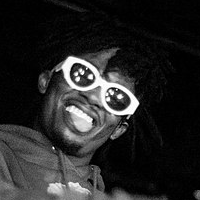
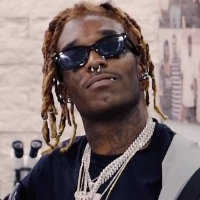
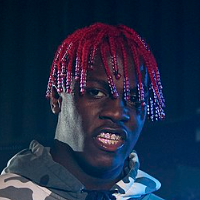
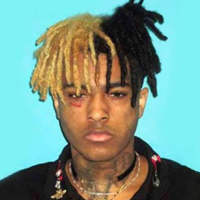

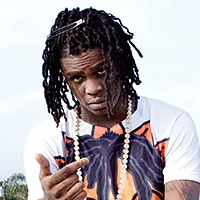
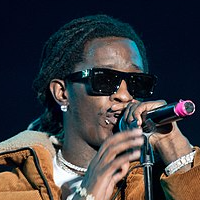
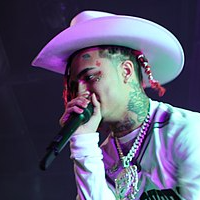
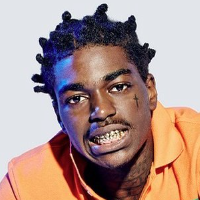

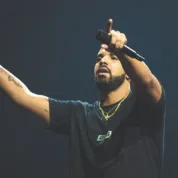

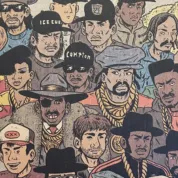
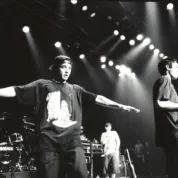
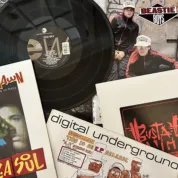
Leave a Reply!